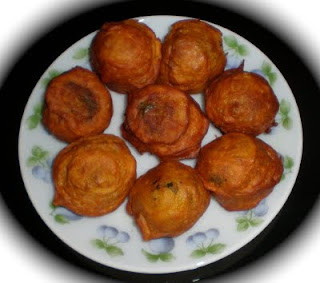
The Pratishtapana (Installation) of the idols of Lord Venkataramana with his consorts of Sridevi and Bhoodevi was made in the year 1868, i.e., on Vaishaka Shudh Sapthami of Vibhava Nama Samvatsara of Hindu calendar. The main idols (Moola Moorthies) of Lord Sri Venkataramana with Sridevi and Bhoodevi were made of Panchaloha - an alloy of five metals. While the idols of Lord Sri Venkataramana, who as Lord of the Universe holds Chakra (Wheel) on right hand, Shankh (Coonch) on the left hand and the Katari in the right waist, the idols of Sridevi (Goddess of wealth and prosperity) and Bhoodevi (Goddess of Prakriti, Sanctity and Success) are seen holding flower buds. The height of idol Lord Venkataramana is about 18 inches and that of Sridevi and Bhoodevi are about 12 inches including the beautifully carved crowns worn on their heads.
After the Pratishtapana (Installation) of Lord Sri Venkataramana, the Prastishtapana and Rama Navami Mahostava was started inside temple parikrama. During these Mahostava Palanki Ustav was held. In the year 1891 a golden covering was offered by Late Ananth Shet(Babu Shet)Sri Venkatramana Temple, Dongerkery Mangalore
Link: dvtmangalore.org










